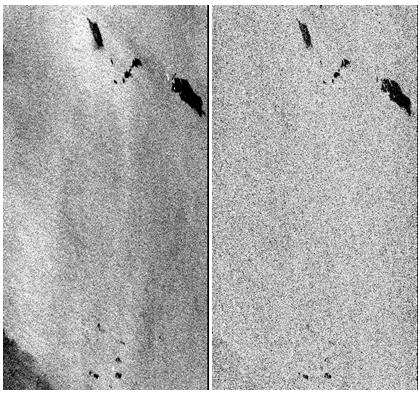Some results
Some results
New methodologies for oil spill detection using quad-pol SAR data
Polarimetric SAR images provide new information for detecting oil spills in SAR imagery. In particular, the co-polarized phase difference (CPD), i.e. the phase difference between the VV and HH polarization, have proved to be useful for discriminating oil spills from look-alikes.
Using quad-pol SAR we data we have constructed the coherency matrix, and by assuming that the underlying backscatter may be modeled using X-Bragg scattering models we have extracted features that either
- depends on only on the sea roughness, and are independent of the relative permittivity, or
- depends only on the relative permittivity, and are independent of the sea roughness
The features are used for enhanced discrimination of oil spills and from look-alikes.
The proposed features are evaluated on two Radarsat-2 quad-pol images covering an oil-in-sea exercise with three different oil types (plant oil, emulsion, and crude oil), and 5 different SIR-C images covering oil spills and alcohol-type surface films (simulating biogenic slicks). The results show that the proposed features emphasize the oil slicks and de-emphasize the biogenic slicks (See figure below. Here the non-oil-spill slick in the lower left corner is suppressed in the sea roughness feature image). This property in desirable in an oil spill processing chain since the number of look-alikes may be reduced.

Left: Radarsat-2 VV-backscatter intensity image. Right: Sea roughness feature image. The leftmost spill is plant oil, the middle spill is emulsion, and the rightmost spill is crude oil. The slick in the lower left corner in the VV-image is of unknown status, but not oil spill.

